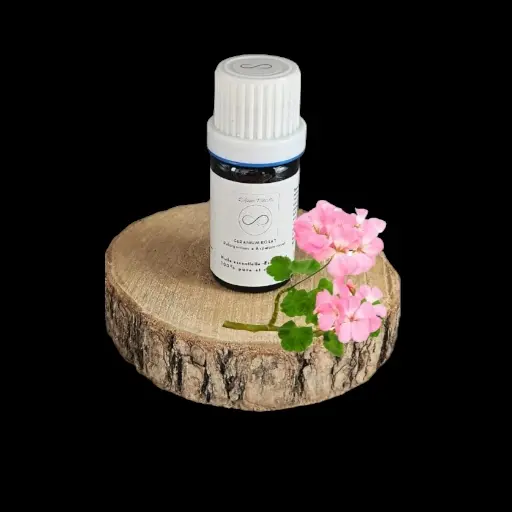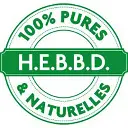Rosat Geranium essential oil
Botanical name: Pelargonium x asperum Rosat or Pelargonium graveolens cv Egypt
Distilled part: Leaf
Botanical family: Geraniaceae
Origin: Egypt
Chemical composition:
- Aldehydes: Geranial, Neral
- Ketones: Isomenthone (6%), Menthone
- Esters: Geranyl Acetate, Citronnelleyl Butyrate, Geranyl Butyrate, Citronnellyl Formate (4.9%), Geranyl Formate (3.4%), Neryl Hexanoate, Neryl Propanoate, Geranyl Tiglate
- Monpterpenes: Alpha and Beta Pinene, Limonene, Myrcene, Ocimene
- Monoterpenols: Alpha Terpineol, Citronnellol (21.90%), Geraniol (19.50%), Linalool (14%)
- Oxides: Cis- and Trans-Rose Oxides
- Sesquiterpenes: Alpha Humulene, Beta Caryophyllene, Delta Cadinene, Germacrene
- Sesquiterpenols
Legend: * powerful,** very powerful;*** extremely powerful (power value for the associated pathology)
PHYSICAL PROPERTIES AND THERAPEUTIC INDICATIONS:
- Bactericidal*
- Burn
- Colitis (of nervous origin*)
- Cut*, Wound*
- Dermatosis*
- Fungicide*
- Hemorrhoids*
- Hemostatic*
- Hemorrhoidal pruritus*
- Hepatopancreatic stimulant*
- Stretch marks (preventative)*
EMOTIONAL, PSYCHIC PROPERTIES AND THERAPEUTIC INDICATIONS:
- Nervous rebalancing*
- Relaxing*
- Stress, Nervous overwork, Agitation, Nervousness, Fear, Phobia, Overexcitement
- Anxiolytic, Calming
- Asthenia, fatigue, promotes concentration
Reference and bibliographic source: Lily BAYER and Dr Hervé STAUB, (2013) “In-depth treatise on Phyto and Aromatherapy”, Ed. Grancher. p.528.
INDICATIONS IN AROMATHERAPY AND THE USE OF ESSENTIAL OILS DO NOT CONSTITUTE A MEDICAL DIAGNOSIS AND DO NOT REPLACE THE ADVICE OF A DOCTOR OR MEDICAL TREATMENT!





